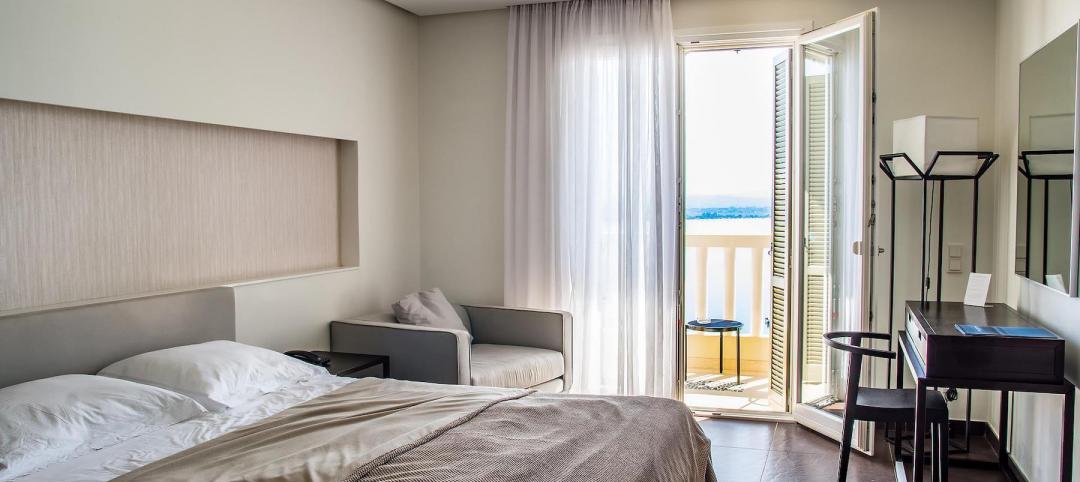As seen in the Q1 2024 U.S. Hotel Construction Pipeline Trend Report from Lodging Econometrics (LE), at the end of the first quarter, there are 6,065 projects with 702,990 rooms in the pipeline. This new all-time high represents a 9% year-over-year (YOY) increase in projects and a 7% YOY increase in rooms compared to last year.
The details can be seen directly within the stages of the pipeline, which all saw YOY growth in Q1. Presently, there are 1,144 projects comprising 141,336 rooms under construction, marking a 9% increase in projects and a 1% increase in rooms YOY. Projects slated to start construction in the next 12 months total 2,259 projects with 260,968 rooms, reflecting a 10% rise in projects and an 8% increase in rooms YOY.
Notably, both projects and room counts in the early planning stage increased by 9% YOY, reaching record-high figures of 2,662 projects and 300,686 rooms, respectively. Of all the projects in the pipeline, a little over half of them are concentrated within the upscale, upper-midscale, and midscale chain scales. In Q1, the upper midscale and midscale segments hit record-high project and room counts. The luxury chain scale also reached a record-high project total in Q1.
The latest data from LE also highlights the dominance of extended-stay brands in the pipeline at Q1, a segment that developers have increasingly favored in recent years. These brands now account for 37% of the total projects under construction, 41% of projects scheduled to begin within the next 12 months, and 39% of projects in the early planning stage. Sixty-three percent of the extended stay projects in the pipeline are branded with brands within the middle tier extended stay segment.
Renovation and brand conversion activities in the U.S. have also seen significant growth, reaching record-high combined totals of 2,041 projects and 266,405 rooms. Brand conversions, in particular, have hit a new record-high of 1,235 projects with 114,680 rooms, growing 14% by projects YOY, while announced renovations at Q1 stand at 806 projects and 151,725 rooms. LE analysts anticipate this robust conversion and renovation activity to continue throughout 2024.
In terms of new hotel openings, the first quarter saw the opening of 114 new hotels with 15,506 rooms in the U.S. Over half of these opens, 72 hotels/8,269 rooms, were in suburban locations, and 60 hotels/10,036 rooms (or 53%/65%) of newly opened hotels were located within the top 50 markets. With a record number of projects in early planning and an increasing number of projects scheduled to start in the next 12 months, LE analysts project modest growth in new hotel openings through 2024.
The LE forecast for the remainder of 2024 includes the opening of another 547 projects with 60,483 rooms, totaling 661 new hotels with 75,989 rooms and representing a 1.3% increase in new hotel supply by year-end. Looking ahead to 2025, LE analysts anticipate an additional 790 new hotels with 85,561 rooms to open in the U.S., resulting in a 1.5% supply increase.
Related Stories
Giants 400 | Aug 22, 2022
Top 45 Engineering Architecture Firms for 2022
Jacobs, AECOM, WSP, and Burns & McDonnell top the rankings of the nation's largest engineering architecture (EA) firms for nonresidential buildings and multifamily buildings work, as reported in Building Design+Construction's 2022 Giants 400 Report.
Giants 400 | Aug 22, 2022
Top 80 Engineering Firms for 2022
Kimley-Horn, Tetra Tech, Langan, and NV5 head the rankings of the nation's largest engineering firms for nonresidential buildings and multifamily buildings work, as reported in Building Design+Construction's 2022 Giants 400 Report.
Giants 400 | Aug 21, 2022
Top 110 Architecture/Engineering Firms for 2022
Stantec, HDR, HOK, and Skidmore, Owings & Merrill top the rankings of the nation's largest architecture engineering (AE) firms for nonresidential and multifamily buildings work, as reported in Building Design+Construction's 2022 Giants 400 Report.
Giants 400 | Aug 20, 2022
Top 180 Architecture Firms for 2022
Gensler, Perkins and Will, HKS, and Perkins Eastman top the rankings of the nation's largest architecture firms for nonresidential and multifamily buildings work, as reported in Building Design+Construction's 2022 Giants 400 Report.
Giants 400 | Aug 19, 2022
2022 Giants 400 Report: Tracking the nation's largest architecture, engineering, and construction firms
Now 46 years running, Building Design+Construction's 2022 Giants 400 Report rankings the largest architecture, engineering, and construction firms in the U.S. This year a record 519 AEC firms participated in BD+C's Giants 400 report. The final report includes more than 130 rankings across 25 building sectors and specialty categories.
Hotel Facilities | Aug 12, 2022
Denver builds the nation’s first carbon-positive hotel
Touted as the nation’s first carbon-positive hotel, Populus recently broke ground in downtown Denver.
Hotel Facilities | Jul 28, 2022
As travel returns, U.S. hotel construction pipeline growth follows
According to the recently released United States Construction Pipeline Trend Report from Lodging Econometrics (LE), the total U.S. construction pipeline stands at 5,220 projects/621,268 rooms at the close of 2022’s second quarter, up 9% Year-Over-Year (YOY) by projects and 4% YOY by rooms.
Hotel Facilities | May 31, 2022
Checking out: Tips for converting hotels to housing
Many building owners are considering repositioning their hotels into another property type, such as senior living communities and rental apartments. Here's advice for getting started.
Sponsored | Multifamily Housing | May 8, 2022
Choosing the right paver system for rooftop amenity spaces
This AIA course by Hoffmann Architects offers best practices for choosing the right paver system for rooftop amenity spaces in multifamily buildings.
Sponsored | BD+C University Course | May 3, 2022
For glass openings, how big is too big?
Advances in glazing materials and glass building systems offer a seemingly unlimited horizon for not only glass performance, but also for the size and extent of these light, transparent forms. Both for enclosures and for indoor environments, novel products and assemblies allow for more glass and less opaque structure—often in places that previously limited their use.
















